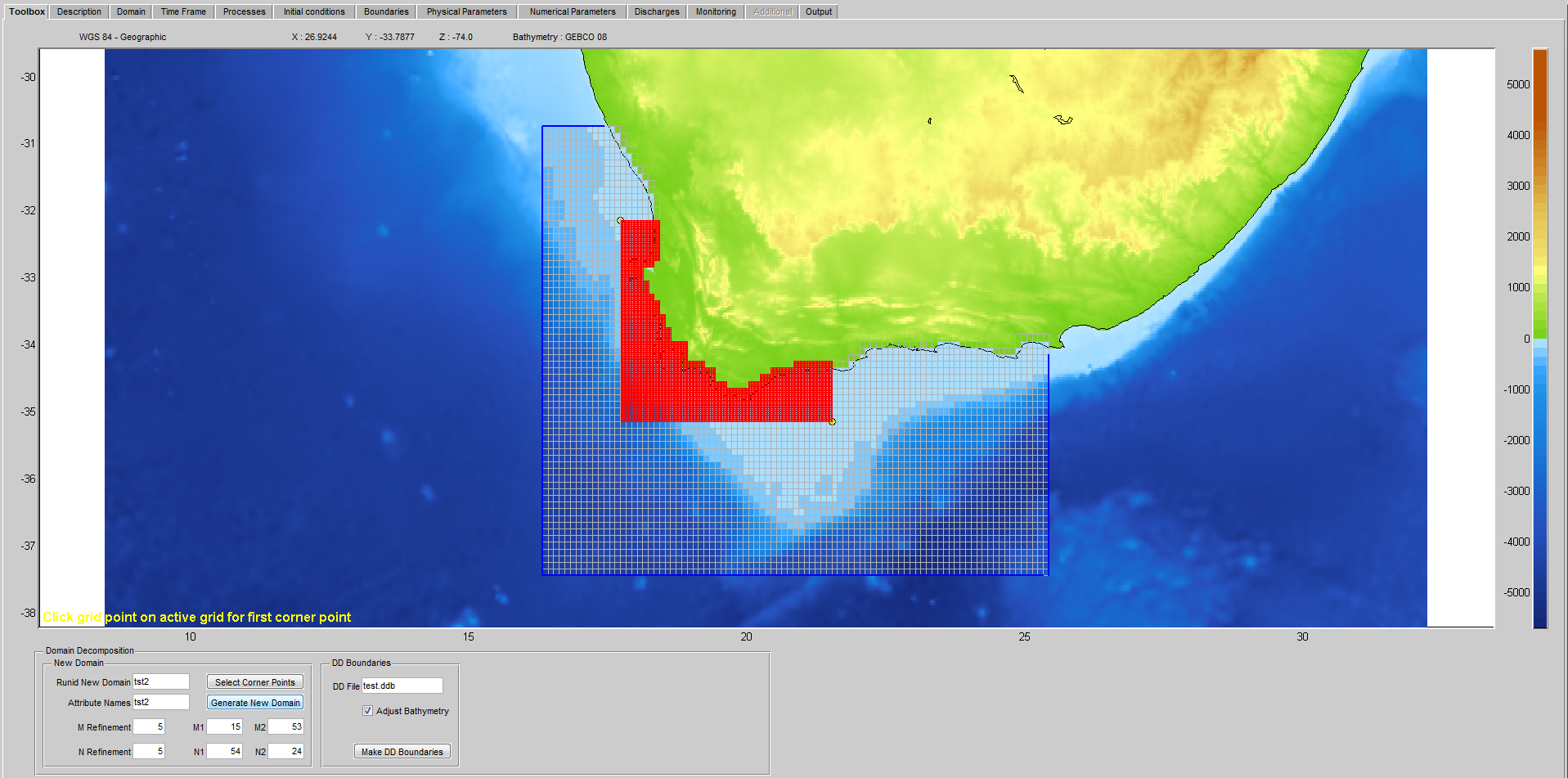Introduction
Domain decomposition is a technique in which a model is divided into a number of smaller model domains. The computation is then carried out separately on each of those domains. The advantages of a multi-domain modelling approach are the possibility of coupling different models, increase the accuracy of the model in the area of interest, and increase the modelling efficiency by a parallel execution of the computations on different domains. Domain decomposition allows for local grid refinement, both in the horizontal direction and in the vertical direction. The 'Domain Decomposition' toolbox is only available for Delft3D-FLOW. For more information, one is referred to the Delft3D-FLOW manual.
Usage of the toolbox
- Given an existing coarser grid, at first “Runid of the New Domain” and “Attribute name” need to be specified. The runid, as described in the Delft3D manual, is part of the filename and safeguards the link between the MDF file and the result files.
- “M refinement” and “N refinement” respectively define the rate of refinement to be applied to the new finer model in M and N grid direction (e.g. a value equal to 5 indicates that the finer model will have a resolution equal to 1/5 with respect to the coarser model).
- The spatial extension of the new model is defined by using the key “Select Corner Points” and selecting with the mouse the two opposite corners of the new domain. To make sure that M,N points from the coarser domain will correspond to M,N coordinates of the finer domain, a .ddb file needs to be generated with the key “Make DDB Boundaries”. A new file with extension “.ddb” is automatically generated in the working directory. This file contains the M,N coordinates of the two domains at the interfaces. You also need to “Generate New Domain” and give a grid name to the new overall grid: this new grid will not include anymore grid cells at the location of the finer grid. By pressing Save all to “.mdf” files will be generated for the coarser and the finer model.
- It is possible to switch from one grid to a different one clicking on the “Domain” toolbar. A different domain will be highlighted in the Map View.
Note: When running with Domain decomposition it is important to select a time step which conforms the finer grid.
Figure: Domain decomposition can be applied with the use of Delft Dashboard as can be seen in this example where we coupled two model areas near the coast of South Africa.
